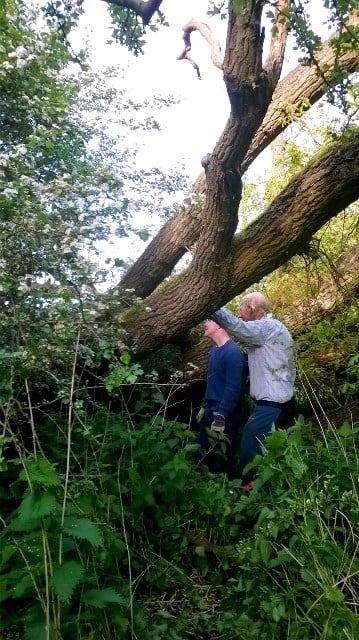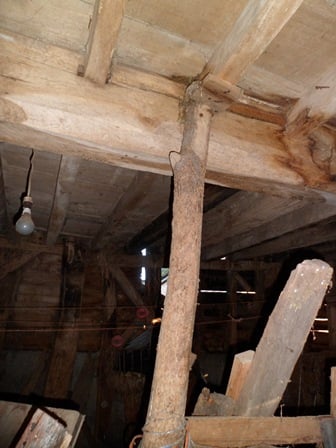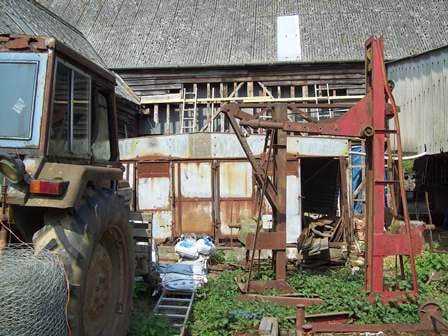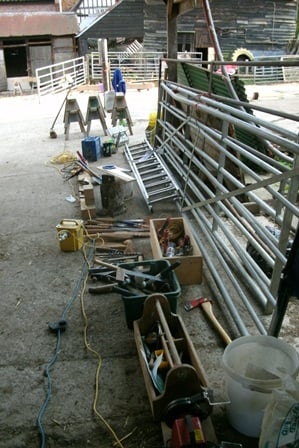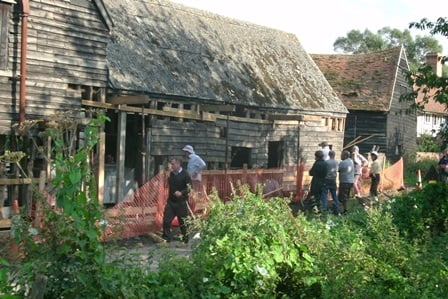Sometimes (..often), visitors to the farm are drafted in to help out. Usually, it's to help block a gap as we move the cows or similar. But sometimes, it's a little more involved...
Last weekend, Paddy, Dad's godson, was literally kidnapped and taken off to help harvest a new green oak beam for the upcoming Timber Frame Course.
And a good job too, as it is safe to say it was not a one man job. The perfectly shaped branch in question belonged to a huge fallen oak at the edge of the Marsh. 

 Employing the basic laws of physics and engineering, plus a chain saw and a JCB, we extracted and lifted the section over the fence.
Employing the basic laws of physics and engineering, plus a chain saw and a JCB, we extracted and lifted the section over the fence.
At one stage the words "Why don't we come back tomorrow and take the fence down?" were uttered. But Farmer Humph was persuaded to persevere (I climbed on the tree trunk and stamped my foot) and has now shaped the beam, and it looks gorgeous.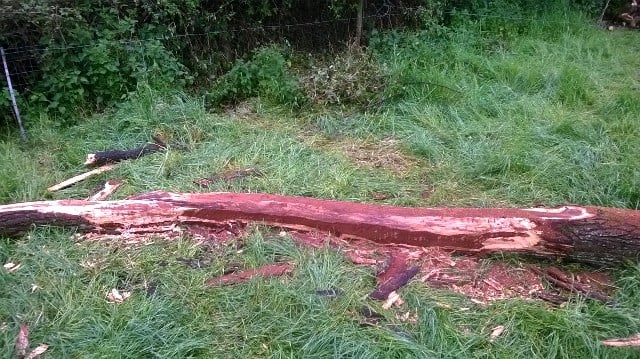 This curved beam will replace a piece of 4x2, and restore the original archway through to the old farm. This particular beam made the cut as its shape roughly matches that of an existing arch, which will remain in situ. It is fantastic to be able to use wood from the farm in the restoration of the Stable. A lot of the timber in the original build is recycled from earlier buildings, but it makes you wonder how much "new" wood was harvested from trees on the farm...without a JCB...how grim.
This curved beam will replace a piece of 4x2, and restore the original archway through to the old farm. This particular beam made the cut as its shape roughly matches that of an existing arch, which will remain in situ. It is fantastic to be able to use wood from the farm in the restoration of the Stable. A lot of the timber in the original build is recycled from earlier buildings, but it makes you wonder how much "new" wood was harvested from trees on the farm...without a JCB...how grim.
Huge thanks to Paddy for explaining to Dad how his plan was a little kamikaze, and working out a safer alternative - model godchild behaviour. Apparently, one of Paddy's early memories is attempting to climb the giant steps up to the combine; a sure sign he should return during harvest and have a go driving that very same Mercator!




